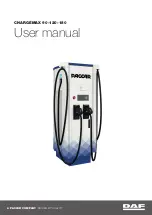
INTRODUCTION
PRELIMINAR STUDIES AND CONSIDERATIONS
MAINTENANCE AND DAMAGE PREVENTION
WORK ON BASIC VEHICLE
MOUNTING AND CONSTRUCTION
POWER TAKE-OFF
ELECTRIC AND ELECTRONIC SYSTEMS
APPENDIX
136
Body Builder Manual Part II, Specific Book LCV
V1.0, February 2015
4.12.8 Equipment installed on roof
When installing equipment on the roof, e.g. roof racks, chillers, wind deflectors, etc.,
some considerations must be observed:
- The variation of the centre of gravity of the vehicle should be considered.
Check that it is within the permissible limits. It is recommended that a stabiliser
bar should be used on the front axle if necessary.
See chapter 2.3.4 "Centre of Gravity (CoG)".
- Check that the axle load is within the permissible limits. It is also necessary be
verify that the minimum load on the front axle is met.
See chapter 2.3.3 "Weight distribution".
- The maximum permissible load on the roof must not be exceeded. Installation
should be carried out in such a way as to ensure as well as possible that loads
are evenly distributed over the entire roof surface. The use support legs
installed at regular distances is recommended.
See chapter 4.3.3 "Roof".
- In vehicles in which it is necessary to install an escape hatch, such as a passen
-
ger vans, the installation of any equipment that might prevent entry or exit
through this opening, if it needs to be used as an emergency exit, is forbidden.
Considerations of the ECE Regulation No R 107 must be respected.
- The specific manufacturer's instructions should always be borne in mind.
- The installation will not produce vibration or noise.
NOTICE
When installing roof racks on the roof of a van, the Body Builder must move the
antenna to another location. The remaining hole should be properly covered, to
ensure it is waterproof.
See chapter 7.6 "Communication Systems".
WARNING
In vehicles which are for the transport of people and have an emergency exit
through the roof, the mounting of any kind of equipment on the roof is forbidden,
if this would cover all or part of the emergency exit hole. This would prevent the
occupants from escaping or being rescued after an accident, and delay the medi
-
cal care of any injured persons.
















































